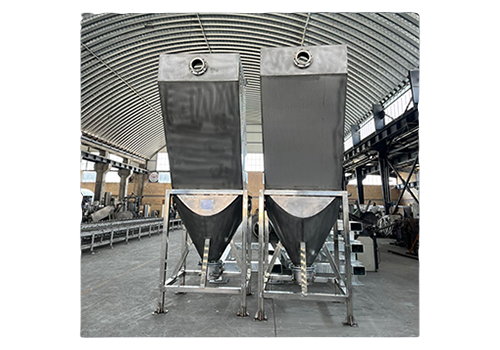 Product Introduction
Product Introduction

Lamella
Lamella sedimentation filter
In thickeners, the thickener surface increases in proportion to its capacity. To save the area occupied by the thickener, or in cases where the solid concentration in the input load to the thickener is low, and as a result, the area required to achieve overflow water with the desired quality is far greater than the area required for settled materials. lamella thickener is used. Inside this thickener, many inclined plates are placed parallel to each other and the input load is directed to the distance between these plates. In this way, the useful surface for sedimentation has increased. Lamella thickeners consist of two parts. Their upper part is in the form of a parallel plane, and the inclined plates are installed in the form of stacks with a slope of 45-55 degrees inside it, and their lower part is in the form of a cone or cylinder.
This type of thickener is used for pulp with a particle size of 1-150 µm and a concentration of less than 15%.
Application in industries and in limited spaces
• (Sand Washing) Sedimentation in sand washing industries
• (Steel, Copper & Mining Process) Sedimentation in steel, mining and copper industries
• (Intake Water Treatment) physical treatment in water treatment plants
• (Wastewater Treatment Plants) Primary and secondary sedimentation in sanitary and industrial wastewater treatment plants
In thickeners, the thickener surface increases in proportion to its capacity. To save the area occupied by the thickener, or in cases where the solid concentration in the input load to the thickener is low, and as a result, the area required to achieve overflow water with the desired quality is far greater than the area required for settled materials. lamella thickener is used. Inside this thickener, many inclined plates are placed parallel to each other and the input load is directed to the distance between these plates. In this way, the useful surface for sedimentation has increased. Lamella thickeners consist of two parts. Their upper part is in the form of a parallel plane, and the inclined plates are installed in groups with a slope of 45-55 degrees inside it, and their lower part is in the form of a cone or cylinder.
The input load enters through the vertical chambers on the sides of the inclined plates and is transferred to the space between the plates through slot-like valves. On the top of each set of plates, there are end-to-end channels equipped with regulation holes for overflow. In this way, it imposes a small hydraulic pressure on the inlet flow and causes the initial load to be uniformly distributed in the spaces between the plates and the amount of turbulence at the inlet points is minimized.
The solid grains in the input load settle on the inclined plates and move on them in the direction of the slope to be discharged into the lower tank. Considering that the initial load enters the space between them from the side of the inclined plates, there is no upward movement in this area. After passing through the screens, the solid materials enter the calm zone and therefore it is not possible to mix them with the incoming load.